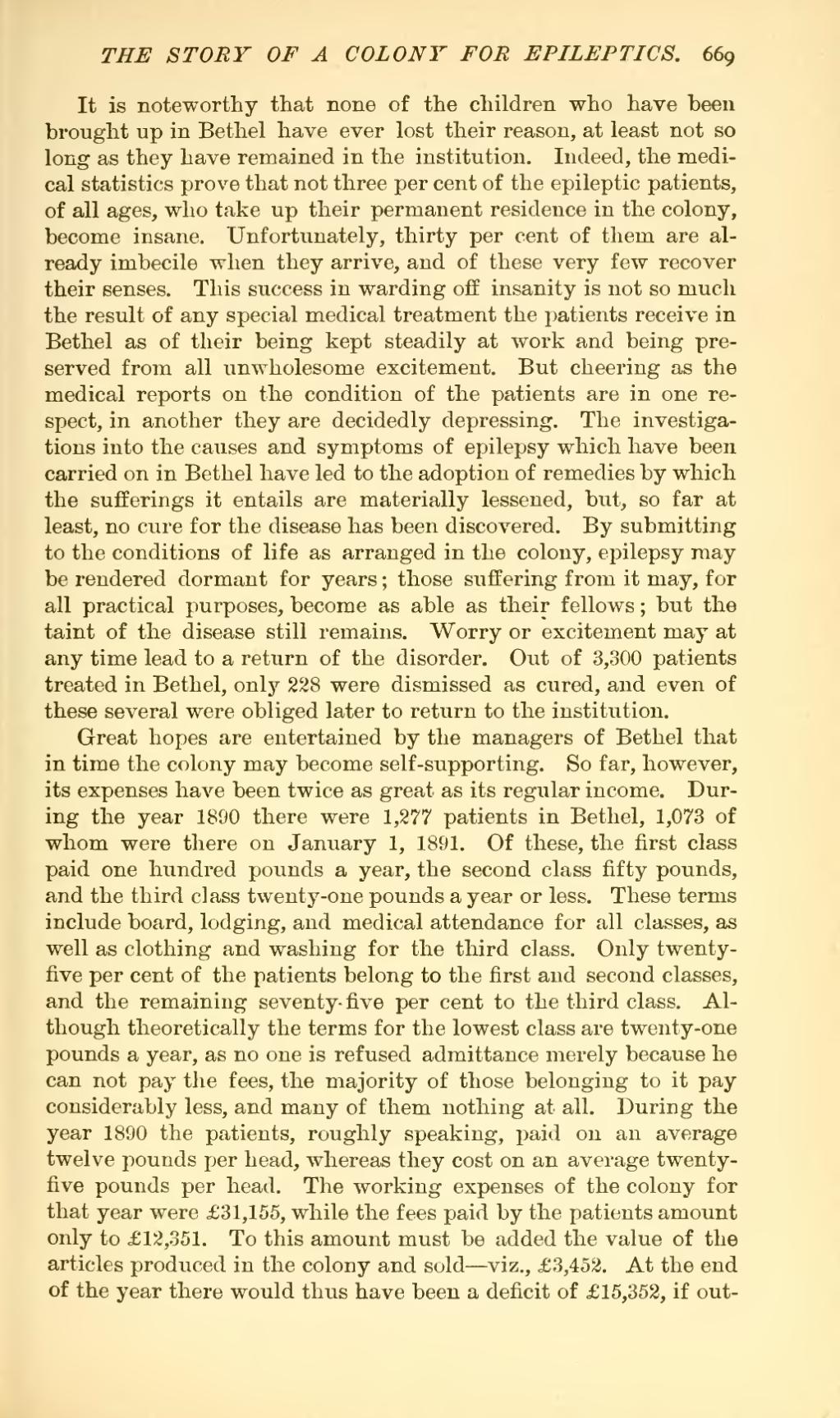It is noteworthy that none of the children who have been brought up in Bethel have ever lost their reason, at least not so long as they have remained in the institution. Indeed, the medical statistics prove that not three per cent of the epileptic patients, of all ages, who take up their permanent residence in the colony, become insane. Unfortunately, thirty per cent of them are already imbecile when they arrive, and of these very few recover their senses. This success in warding off insanity is not so much the result of any special medical treatment the patients receive in Bethel as of their being kept steadily at work and being preserved from all unwholesome excitement. But cheering as the medical reports on the condition of the patients are in one respect, in another they are decidedly depressing. The investigations into the causes and symptoms of epilepsy which have been carried on in Bethel have led to the adoption of remedies by which the sufferings it entails are materially lessened, but, so far at least, no cure for the disease has been discovered. By submitting to the conditions of life as arranged in the colony, epilepsy may be rendered dormant for years; those suffering from it may, for all practical purposes, become as able as their fellows; but the taint of the disease still remains. Worry or excitement may at any time lead to a return of the disorder. Out of 3,300 patients treated in Bethel, only 228 were dismissed as cured, and even of these several were obliged later to return to the institution.
Great hopes are entertained by the managers of Bethel that in time the colony may become self-supporting. So far, however, its expenses have been twice as great as its regular income. During the year 1890 there were 1,277 patients in Bethel, 1,073 of whom were there on January 1, 1891. Of these, the first class paid one hundred pounds a year, the second class fifty pounds, and the third class twenty-one pounds a year or less. These terms include board, lodging, and medical attendance for all classes, as well as clothing and washing for the third class. Only twenty-five per cent of the patients belong to the first and second classes, and the remaining seventy-five per cent to the third class. Although theoretically the terms for the lowest class are twenty-one pounds a year, as no one is refused admittance merely because he can not pay the fees, the majority of those belonging to it pay considerably less, and many of them nothing at all. During the year 1890 the patients, roughly speaking, paid on an average twelve pounds per head, whereas they cost on an average twenty-five pounds per head. The working expenses of the colony for that year were £31,155, while the fees paid by the patients amount only to £12,351. To this amount must be added the value of the articles produced in the colony and sold—viz., £3,452. At the end of the year there would thus have been a deficit of £15,352, if out-
